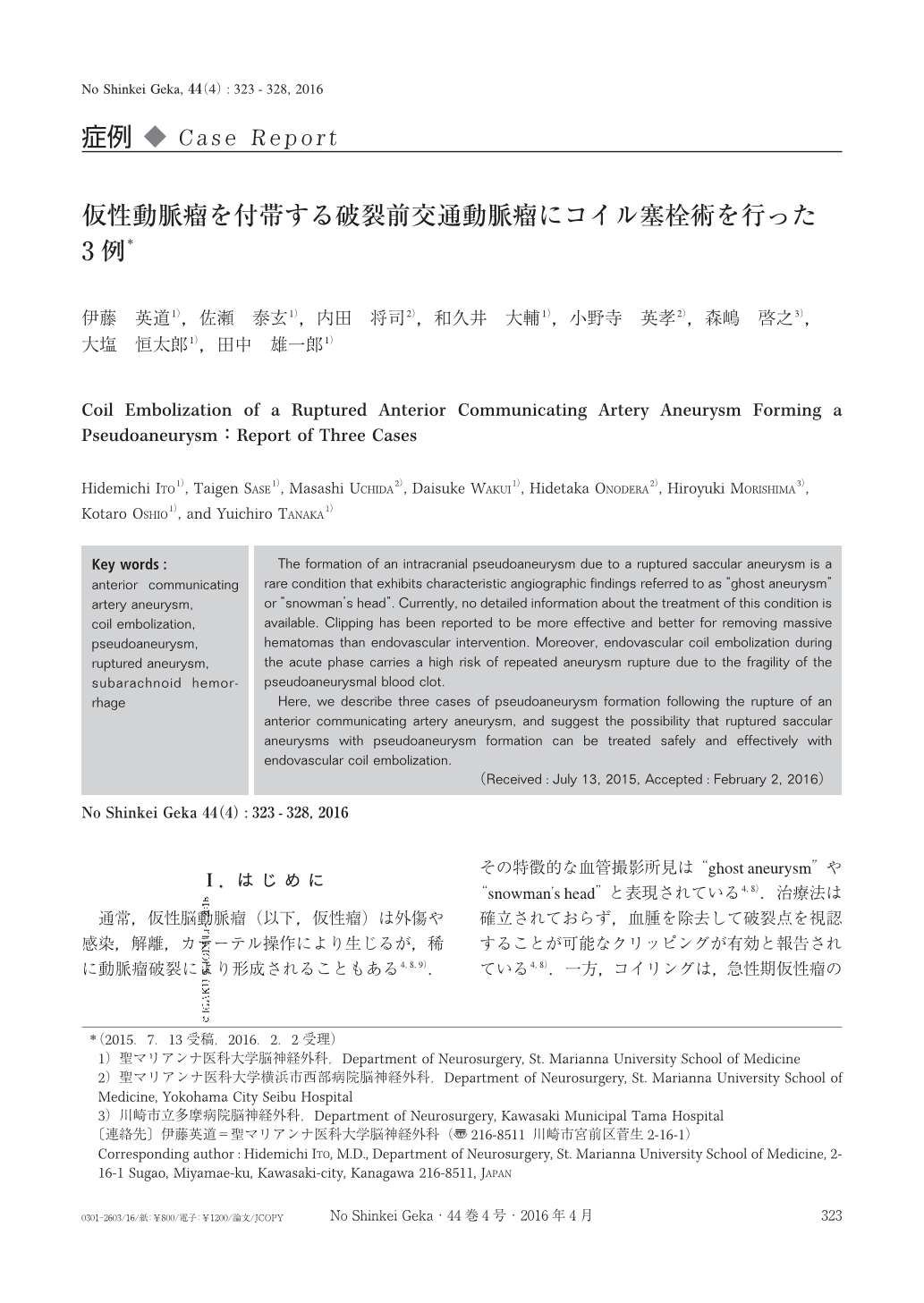Japanese
English
- 有料閲覧
- Abstract 文献概要
- 1ページ目 Look Inside
- 参考文献 Reference
Ⅰ.はじめに
通常,仮性脳動脈瘤(以下,仮性瘤)は外傷や感染,解離,カテーテル操作により生じるが,稀に動脈瘤破裂により形成されることもある4,8,9).その特徴的な血管撮影所見は“ghost aneurysm”や“snowman's head”と表現されている4,8).治療法は確立されておらず,血腫を除去して破裂点を視認することが可能なクリッピングが有効と報告されている4,8).一方,コイリングは,急性期仮性瘤の壁は線維化が乏しく脆弱であるために術中出血の危険性が高いと指摘されている9).今回われわれは仮性瘤を付帯する破裂前交通動脈瘤の3例を経験した.異なる時期と手法でコイリングを行い,安全に行うために必要な条件を検討したため,文献的考察を加えて報告する.
The formation of an intracranial pseudoaneurysm due to a ruptured saccular aneurysm is a rare condition that exhibits characteristic angiographic findings referred to as “ghost aneurysm” or “snowman's head”. Currently, no detailed information about the treatment of this condition is available. Clipping has been reported to be more effective and better for removing massive hematomas than endovascular intervention. Moreover, endovascular coil embolization during the acute phase carries a high risk of repeated aneurysm rupture due to the fragility of the pseudoaneurysmal blood clot.
Here, we describe three cases of pseudoaneurysm formation following the rupture of an anterior communicating artery aneurysm, and suggest the possibility that ruptured saccular aneurysms with pseudoaneurysm formation can be treated safely and effectively with endovascular coil embolization.

Copyright © 2016, Igaku-Shoin Ltd. All rights reserved.


